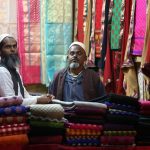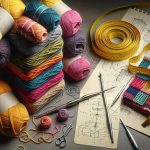You want to know what makes cotton textiles high quality? Look no further.
There are three key factors you need to consider.
First, the quality of the fibers used.
Second, the weaving technique employed.
And finally, the finishing processes that are applied.
By understanding and paying attention to these factors, you can ensure that the cotton textiles you choose are of the highest quality.
Table of Contents
Fiber Quality
The fiber quality of cotton plays a crucial role in determining the overall quality of textile products. When it comes to cotton, the spinning technique used and the strength of the yarn are two key factors that directly impact the quality of the final product.
The spinning technique refers to the process of converting cotton fibers into yarn. The quality of the spinning technique greatly affects the strength and durability of the yarn. A well-executed spinning technique ensures that the yarn is consistent in thickness and has a high level of twist, resulting in a stronger and more reliable yarn. On the other hand, a poor spinning technique can lead to irregularities in the yarn, making it weaker and more prone to breakage.
Yarn strength is another crucial aspect of fiber quality. The strength of the yarn determines how well it can withstand tension, abrasion, and other stresses that it may encounter during the textile manufacturing process. Stronger yarns not only contribute to the overall durability of the textile product but also enhance its performance and longevity.
Weaving Technique
Now let’s delve into the importance of the weaving technique in determining the quality of cotton textile products. The way the fibers are woven together greatly affects the strength, durability, and overall appearance of the fabric. Here are three key factors to consider when it comes to weaving technique:
-
Warp and Weft: The warp and weft are the two basic components of woven fabric. The warp refers to the longitudinal threads that run parallel to the selvage, while the weft are the transverse threads that interlace with the warp. The way these threads are arranged and interlocked can influence the fabric’s strength, drape, and dimensional stability.
-
Loom Technology: Loom technology plays a crucial role in weaving cotton textiles. Traditional handlooms, power looms, and modern computerized looms each have their own advantages and limitations. Advanced loom technologies allow for precise control over tension, speed, and pattern design, resulting in better quality fabrics with consistent weave structures.
-
Fabric Density: The density of the fabric refers to the number of warp and weft threads per square inch. A higher fabric density generally indicates a tighter weave, resulting in a smoother, more durable fabric. However, excessively high densities can lead to reduced breathability and flexibility.
Finishing Processes
As you continue exploring the factors determining cotton textile quality, let’s now delve into the importance of finishing processes. Finishing processes play a crucial role in enhancing the visual appeal and durability of cotton textiles. These processes include dyeing methods and printing techniques, which add color and patterns to the fabric.
Dyeing methods involve the application of colorants to the cotton fibers, resulting in vibrant and long-lasting hues. There are various dyeing techniques, such as direct dyeing, vat dyeing, and reactive dyeing, each offering different advantages in terms of color fastness and environmental impact. The choice of dyeing method can greatly influence the final quality of the textile.
Printing techniques, on the other hand, allow for intricate patterns and designs to be transferred onto the cotton fabric. Common printing methods include screen printing, block printing, and digital printing. These techniques enable manufacturers to create unique and visually appealing textiles that cater to different market preferences.
To provide a clear overview, here is a table showcasing some popular dyeing methods and printing techniques used in the cotton textile industry:
| Dyeing Methods | Printing Techniques |
|---|---|
| Direct Dyeing | Screen Printing |
| Vat Dyeing | Block Printing |
| Reactive Dyeing | Digital Printing |
Frequently Asked Questions
What Are the Different Types of Cotton Fibers Used in Textile Production?
In cotton textile production, different types of cotton fibers are used. These fibers vary in quality and characteristics, such as length, strength, and fineness. Understanding the types of cotton fibers is important for producing high-quality textiles.
How Does the Weaving Technique Affect the Durability of Cotton Textiles?
Weaving techniques play a crucial role in determining the durability of cotton textiles. Different weaving patterns and methods can impact the strength and longevity of the fabric, ultimately affecting the overall quality of the textile.
What Are the Common Finishing Processes Used to Enhance the Appearance and Texture of Cotton Textiles?
To enhance the appearance and texture of cotton textiles, common finishing techniques include fabric manipulation. These processes are used to add special effects, improve drape, and create desired finishes on the fabric.
Are There Any Environmental Considerations Associated With the Production of High-Quality Cotton Textiles?
When considering the environmental impact of high-quality cotton textiles, it is important to prioritize sustainable practices. This involves implementing eco-friendly production methods and reducing the use of harmful chemicals.
Can You Provide Examples of Innovative Techniques or Technologies Used in the Cotton Textile Industry to Improve Quality?
Innovative techniques and technologies in the cotton textile industry include nanotechnology applications and digital printing advancements. These advancements have improved the quality of cotton textiles by enhancing fabric properties and allowing for more precise designs.
- Wholesale Scrim Fabric: A Sourcing Guide for Businesses and Large Projects - June 26, 2025
- The Pros and Cons of Cotton vs. Polyester Theatrical Scrim Curtains - June 26, 2025
- Can You Wash a Stage Scrim? A Step-by-Step Cleaning Guide - June 26, 2025






